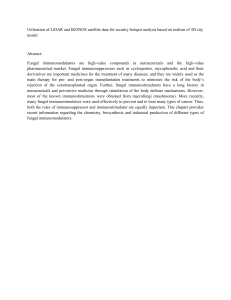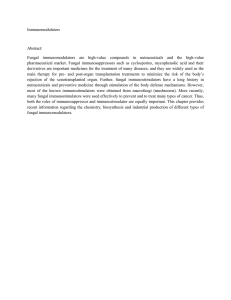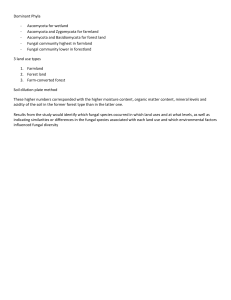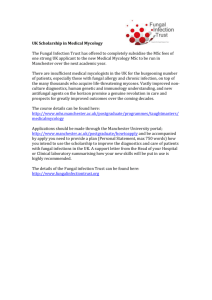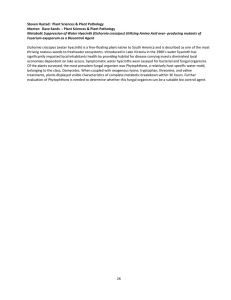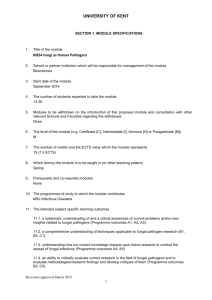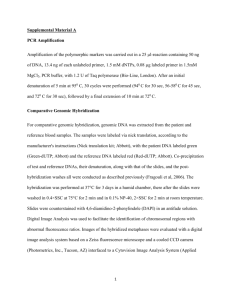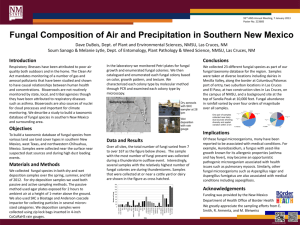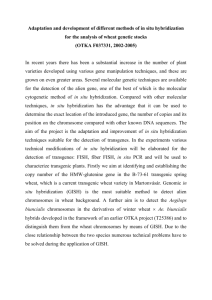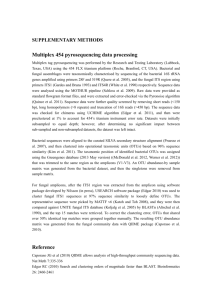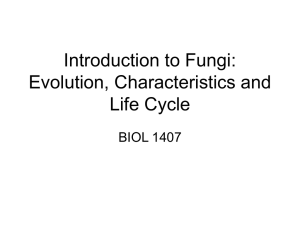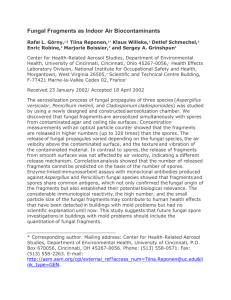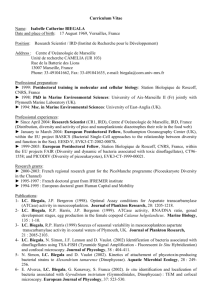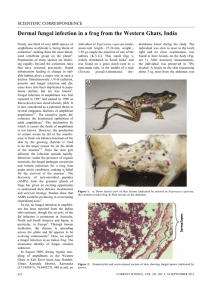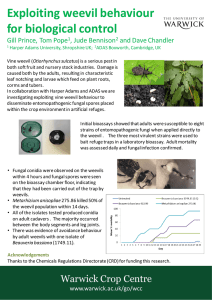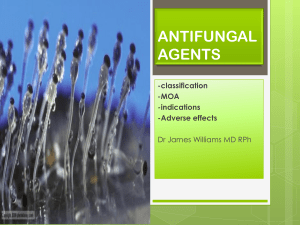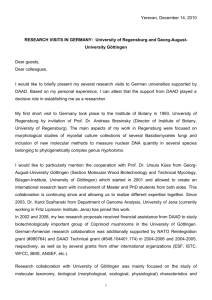Optimization of a fluorescence in situ hybridization method for the
advertisement
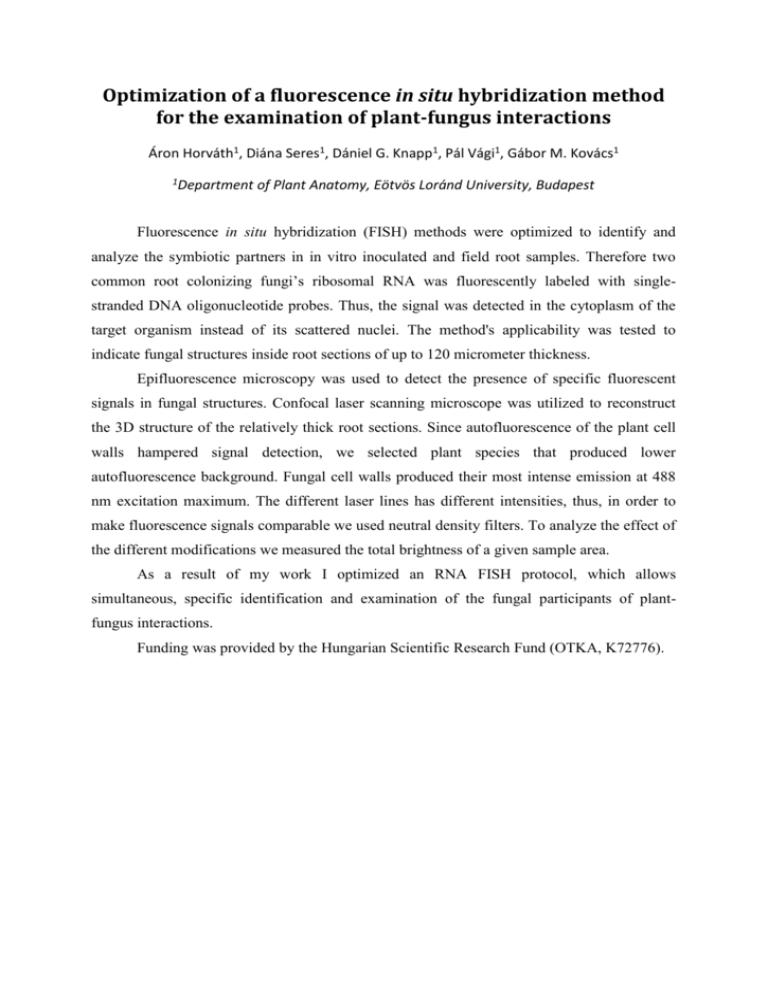
Optimization of a fluorescence in situ hybridization method for the examination of plant-fungus interactions Áron Horváth1, Diána Seres1, Dániel G. Knapp1, Pál Vági1, Gábor M. Kovács1 1Department of Plant Anatomy, Eötvös Loránd University, Budapest Fluorescence in situ hybridization (FISH) methods were optimized to identify and analyze the symbiotic partners in in vitro inoculated and field root samples. Therefore two common root colonizing fungi’s ribosomal RNA was fluorescently labeled with singlestranded DNA oligonucleotide probes. Thus, the signal was detected in the cytoplasm of the target organism instead of its scattered nuclei. The method's applicability was tested to indicate fungal structures inside root sections of up to 120 micrometer thickness. Epifluorescence microscopy was used to detect the presence of specific fluorescent signals in fungal structures. Confocal laser scanning microscope was utilized to reconstruct the 3D structure of the relatively thick root sections. Since autofluorescence of the plant cell walls hampered signal detection, we selected plant species that produced lower autofluorescence background. Fungal cell walls produced their most intense emission at 488 nm excitation maximum. The different laser lines has different intensities, thus, in order to make fluorescence signals comparable we used neutral density filters. To analyze the effect of the different modifications we measured the total brightness of a given sample area. As a result of my work I optimized an RNA FISH protocol, which allows simultaneous, specific identification and examination of the fungal participants of plantfungus interactions. Funding was provided by the Hungarian Scientific Research Fund (OTKA, K72776).
